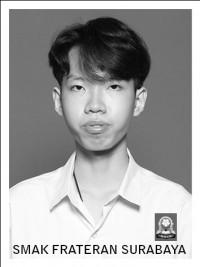- Home
- Hair
- Moustache Transplant Doctor
- Best Moustache Transplant Surgeon in Delhi
Best Moustache Transplant in Delhi | Mustache Transplant Procedure, Cost in Delhi
Hair restoration surgery is a procedure to restore hair to the bald areas of the scalp performed by highly qualified Moustache Transplant Surgeons Delhi at SKINOS® It is a permanent solution to baldness due to hair fall.
They are of various Moustache Transplant techniques. The most commonly performed hair restoration surgery is FUE Moustache Transplantation. The other surgical techniques are flap surgery, tissue expansion of the scalp, and scalp reduction. Dr Shruti Gupta is the Best Hair Surgeon in Delhi giving consistent quality results.
What is hair transplant surgery?
Hair transplantation involves extracting grafts from a donor site, usually the back of the scalp, and transplanting them into the recipient area, the bald area.It can be performed in two ways -
- Follicular unit transplant (FUT) in which a strip of hair bearing scalp tissue is harvested from the back of the scalp, individual follicular units cut and then transplanted into the donor area.
- Follicular unit extraction (FUE) in which individual hair follicle units are harvested from the donor area using a motorised punching machine, and then these grafts are simultaneously implanted in the recipient area.
Flap surgery is more elaborate and involves rotating a flap of hair bearing area to the bald area.
In tissue expansion surgery, the hair bearing scalp is expanded using tissue expander, and then the expanded tissue is moved to the bald area.
Scalp reduction surgery is simply excising the bald area and suturing together the hair bearing areas on the scalp.
Who is a suitable candidate for hair transplantation?
Anyone with a balding scalp and also a good donor area can undergo Moustache Transplant surgery
Donor area is the area from which hair follicle grafts are extracted. This includes the back of the scalp.
Additional factors like hair colour and texture also influence the Moustache Transplant results.
Moustache Transplant surgery can improve your overall appearance and boost your confidence and self-esteem.
Who is a poor candidate for Moustache Transplant surgery?
People with hair thinning in the back of the scalp (donor area) and with advanced degree of hair loss are not suitable for Moustache Transplant surgery.
Also people with uncontrolled high blood pressure, blood-clotting problems or the tendency to form excessive scars, are at high risk of complications during and after surgery.
How is Moustache Transplant surgery performed?
Moustache Transplantation mainly consists of 4 stages.
These stages are:
- Preparation for Hair Transplantation
- Graft Harvesting
- Recipient Site Creation
- Transplantation of Hair Follicles
Preparation for Hair Transplantation
The preparation stage involves disinfection of the harvesting (donor) and transplantation (recipient) area, and more importantly, the administration of anaesthesia.
Although it is a procedure before hair transplantation, in a sense, the phase that determines the comfort of the operation is this stage where anaesthesia is is administered.
Anaesthesia in Hair Transplantation
Moustache Transplant is performed under local anaesthesia, which is administered through injection.
Graft Harvesting
The process to be performed after the administration of anaesthesia in hair transplantation is the separation of hair follicles from the skin using a motorised punching device.
Graft harvesting is a very important and crucial step of Moustache Transplant surgery as it determines the final results.
The goal is to give the most natural and perfect look after the surgery without leaving behind any traces of a surgical procedure. So to make the procedure scarless, the grafts should be harvested in a regular pattern skipping some follicles in between. When the left over follicles will grow hair, they should give a uniform density sufficient to cover the extracted areas.
Recipient Site Creation
Recipient site creation is another important step.The deciding factor of how natural the results will be after the surgery, depends on the density achieved, keeping in mind the right angles and direction of hair growth.
Recipient site incisions are made in accordance with these two factors to give the most natural results.
Transplantation of Hair Follicles
Implantation of the extracted hair follicle grafts in the last step. During the implantation, surgeon needs to be very careful not to damage the hair roots while holding and transferring them.
What should I expect during my Moustache Transplant recovery?
Follicular unit extraction (FUE) is associated with a shorter recovery time as compared to other forms of Moustache Transplant surgeries. Hence, FUE is the most popular procedure performed across globe.
Use pain killers such as Paracetamol to reduce the pain and discomfort that occurs after surgery
Take a few days off from work to allow bruising and swelling around your hairline to subside.
It’s absolutely normal if your scalp looks pink and feels tight. The areas where the donor hair have been implanted will have crusted or formed scabs which will fall off in a few days later.
What are the DOs and DONTs post Moustache Transplant surgery?
DOs
Take your medication at a specific time of the day as advised on the schedule.
Spray the normal saline on the transplanted hair regularly for one week. Use saline water that will be given to you by the clinic .
Continue with the anti-hair loss oral medications. Minoxidil should be started one month after the surgery.
You may continue with your daily activities as usual.
You may also start light exercises in the form of morning or evening walk
You may start to have normal sexual life after 3 days.
Cover the head with a surgical cap for minimum 3 weeks to prevent exposure to heat, dust and sun rays.
Press the fore head from centre to lateral to prevent swelling around the eyes.
After shampooing, the transplanted hair should be dab dried from behind forwards, and temple area from top to bottom.
Use sterile normal saline provided from the clinic to water the roots for the first week. After wards, you may use mineral water.
DONTs
Avoid alcohol consumption for first 2 day.
Do not use tap water over the transplanted hair till 2 weeks.
Avoid heavy exercises for at least one month.
Avoid bending down for first 5 days to prevent swelling.
Do not use hair dryer.
Do not scratch the transplanted hair.
Do not comb the transplanted hair with a comb.
Do not do icing of the transplanted area or the face.
Do not rub the transplanted area with gauze from front to back.
Do not use any other shampoo except the one recommended by the doctor.
Avoid taking steam or sauna bath for at least 14 days.
You can start wear your own loose cap/ hat/ bandana over the surgical cap 5 days after the procedure.
Avoid woollen caps. Avoid wearing helmet for at least 6 weeks after the surgery.
Cap should be removed by lifting it from the back to front.
Do not get a hair cut until 6 weeks.
Do not colour the hair until 6 weeks.
After the first 2 weeks do not cover the head with a cap unnecessarily.
You may use an anti-dandruff shampoo twice a week, if required.
If grafts have been taken from the beard area, avoid shaving it for one week to allow complete healing.
Shampoo should be used maximum 3 times a week.
During a long flight, avoid using a cap, instead you may use a loose bandana.
Avoid swimming for minimum one month.
Use ice pack to reduce any swelling or bleeding during the first week but do not place this onto the grafted area. Place it either on your forehead or at the back of your head.
Avoid activities like sports and exercises for the first week after the surgery.
Take antibiotics prescribed in the form of a cream and pills. This will help you prevent any infection.
Avoid exposure to the sun whilst your scalp is still pink and swollen. Wear a cap if you have to go out in the sun.
Any bleeding spot should be stopped immediately by applying a fingertip to the area gently till the bleeding stops.
Severe nausea, vomiting and high body temperature needs immediate medical attention.
Caffeine should be decreased to a minimum.
When can I expect to see the hair growth?
The newly transplanted hair will shed; it is a normal reaction to hair transplant known as ‘thermal shock’. After hair sheds, they will start to regrow in 5 - 6 weeks.
The transplanted hair grafts start growing new hair. After three months, the newly grown hair starts following the normal growth/ loss cycle. Boost the growth of these hair by opting for a PRP session.
Witness the full result of your hair transplant between 6 and 12 months after the surgery.
What are the risks of hair transplant surgery?
Moustache Transplant surgery is normally safe when performed by a qualified, experienced surgeon. Still, because every body is unique in the way their body heals, the result can never be 100% predicted.
As in any surgical procedure, infection may occur. Excessive bleeding and/or wide scars may occur.
There is also a risk that some of the grafts are not “taken up”, i.e., some grafts fail to establish blood supply at the recipient site. So these grafts fail to grow and produce hair. If the proportion of failed grafts is high, a repeat surgery might be required.
Sometimes, there may occur a complication called “cobble stoning”. In this, the grafts are seen as raised bumps. Nothing much can be done in this condition, except camouflaging it with surrounding hair.
Lastly, if the client is not compliant with the anti-hair loss treatment post surgery, the existing hair may gradually thin out and then disappear, leaving an island of transplanted hair in the front, which looks patchy and unnatural. In such cases, a second surgery to cover the new bald area is required.
What hair transplant procedures are recommended for women?
Hair thinning is a very common problem in women as well. It usually occurs because of advancing age and hormonal changes associated with menopause. Women tend to experience hair thinning more commonly seen as widening of the central parting. rather than a complete hair loss or bald patches.FUE is usually the surgical treatment of choice for filling-in thinning areas
What is Moustache Transplantation and Moustache transplantation?
Having a dense beard and moustache is the latest trend among men.
But not all are fortunate to have a dense growth for best styling. So beard and moustache hair transplantation comes the to rescue for people desiring an intense look.
How is beard and moustache transplant done?
Just like hair transplantation on the scalp, beard and moustache transplant also involves extracting hair follicle grafts from the back of the scalp and implanting them in the beard and moustache area by the FUE technique.The procedure is done under local injectable anaesthesia. Because FUE technique is employed, there are no stitches and it is practically a scarless procedure.
Who is a suitable candidate?
Anyone with sparse beard and/ or moustache growth desiring to have a better hair density can opt for this procedure. Also anyone who has lost the hair in this area due to any medical condition or traction alopecia, are also good candidates.
What should I expect during my recovery period?
After one week, the transplanted area will look very natural. The donor area recovers completely within 2 weeks.
When can I expect the results?
The final results are seen after 6-9 months. You will start to have a dense natural looking beard and moustache.
What is Eyebrow transplant?
Eyebrow is a very important part of human face. It defines once appearance and characteristics. They form part of emotional expressions during communication with others.
Losing eyebrows can be more traumatic than losing hair from the scalp. Eyebrow loss may occur because of some skin diseases like alopecia areata, leprosy, advancing age, permanent makeup, and chemotherapy.Eyebrow transplant procedure is performed to restore the lost eyebrows.
What is the procedure of eyebrow transplant?
Eyebrow transplant is a very delicate procedure requiring lot of care and attention.
It is done using the FUE technique as this is the technique that can provide the most natural and aesthetic results.
Before starting with the surgery, the primary step is to define the eyebrow shape and the direction and angle of each hair follicle. This should be done with utmost caution.
The overall procedure of eyebrow transplantation remains the same as that of hair transplantation on the scalp/ beard/ moustache.
Who is a suitable candidate?
Anyone with partial or complete irreversible loss of hair from the eyebrows can opt for eyebrow transplant.
How soon can I expect the results?
One can start to see the eyebrow growth in 3 months, however, final results may take up to 9 months.
How is PRP used in hair transplantation?
PRP is used during all FUE procedures. The advantages of using PRP are:
- Faster healing of the tissues, both in the donor as well as the recipient areas.
- Prolongation of the active growth phase ( anagen) of the hair follicles.
- Better survival of the transplanted follicles in the recipient area.
- Increased uptake of the grafts in the recipient area.
PRP primarily works by stimulating the growth of new blood vessels in the transplanted area thus facilitating the growth of hair follicles.
PRP treatment is hence recommended to be taken post hair transplant surgery to enhance the growth of transplanted hair as well as the existing hair.
What Our Patients Say
Nothing gives us more pleasure than the happiness and gratitude expressed by our clients at the end of their Skin, Hair, and Laser treatment!

I recommend Dr. Shruti Gupta because she explains everything related to my problems patiently and p...
Divya Sonkar
Studentaaa
First of all I would like to thank Dr Shruti Gupta Mam for giving me a new life. On the advice of my...
Dinesh
DU Student
Dr.Shruti is very humble and adorable to everyone she explains everything wonderfully, and answers a...
Mukta Rathee
MBBS Student
It was a pleasant experience. Your work is par above my expectations. My exuberant hair growth gives...
Mohit Shukla
DJ
I have acne issue from last 13 year's I tried all from the to homemade solution but nothing's work a...
Sonal Wahi
SQ - CA25000 +
Happy Clients
5
Qualified Doctors
9
Luxury Suites
50 +
Authorized Partners

